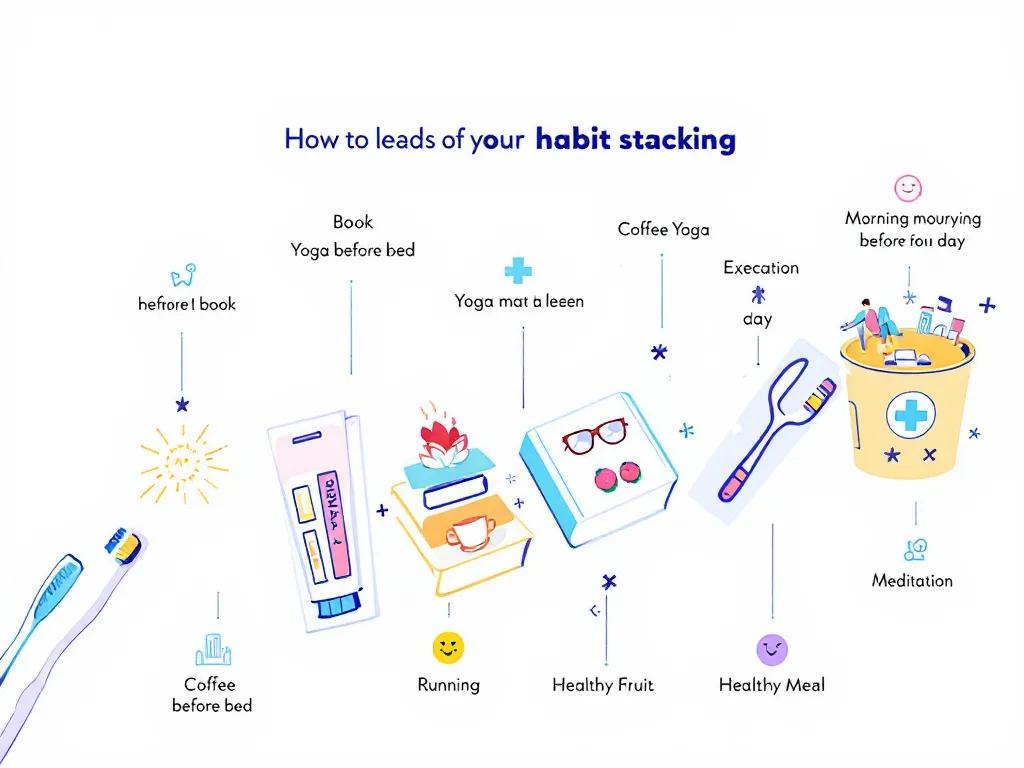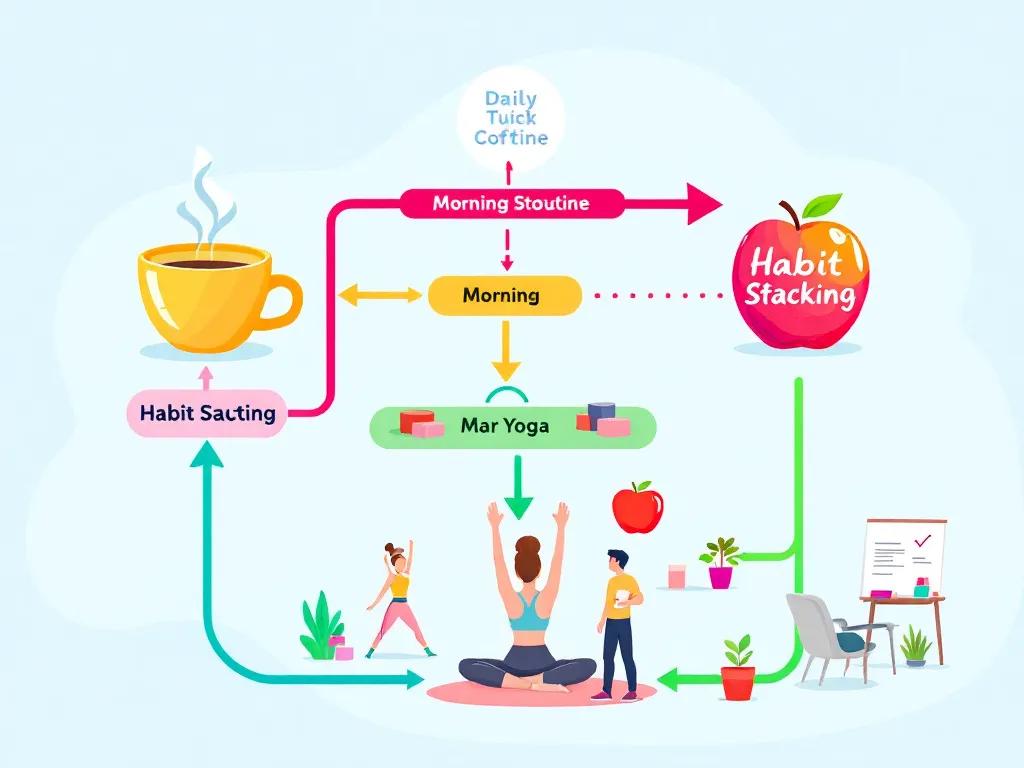The Science Behind Habit Stacking: Using Behavioral Psychology to Transform Your Daily Routine

Last updated: November 25, 2024
Discover the science of habit stacking, a powerful strategy grounded in behavioral psychology that leverages existing routines to easily adopt new habits. Transform your daily routine with practical techniques and real-life examples, creating sustained and positive lifestyle changes.
The Science Behind Habit Stacking: Using Behavioral Psychology to Transform Your Daily Routine
Introduction
Have you ever wondered why certain things you do every day seem so automatic? From brushing your teeth to getting dressed in the morning, these actions have become habits—routines that your brain has mastered over time. But did you know there’s a powerful scientific method to harness your existing habits to create new, productive behaviors? This fascinating approach is known as habit stacking.
What is Habit Stacking?
Habit stacking involves grouping small behaviors together into a routine, piggybacking new habits onto existing ones. This technique draws on the principles of behavioral psychology to make forming new habits easier and more intuitive. Imagine it as a domino effect, where one well-established habit triggers the next, creating a seamless chain of actions in your daily routine.
Thesis Statement
By leveraging behavioral psychology through habit stacking, we can enhance habit adoption and transform our daily routines. Let's dive into how this science works and how you can apply it to change your life, one habit at a time. We’ll explore the principles of habit formation, the psychology behind stacking, effective techniques, real-life applications, and much more.
Understanding Habit Formation
Neural Efficiency in Habits
Our brains are like highly efficient computers, always looking for the easiest way to do things. This is why habits are so powerful—they form strong neural pathways that make activities feel almost automatic. According to research from Duke University, about 45% of our daily activities are habits we’ve formed over time (link). This staggering statistic highlights just how much of our day is spent following routines rather than making conscious choices.
Role of Existing Habits
Existing habits act as a foundation for introducing new behaviors. When you attach a new behavior to an existing habit, the familiar routine becomes a trigger, making it easier to adopt the new habit. For instance, if you're trying to drink more water, you can stack this habit onto a meal you already eat daily.
The Psychology Behind Habit Stacking
Behavioral Psychology Foundations
At the heart of habit stacking is the cue-routine-reward loop—a concept where a specific cue triggers a routine that leads to a reward. This loop is the psychological pillar of habit formation (link). By attaching new habits to these patterns, you tap into existing mental processes, making new behaviors easier to adopt.
Ease of Adopting New Behaviors
Because established habits already have the neural pathways and cues in place, adding new behaviors to these routines minimizes the effort required to start a new habit. It’s like saving a new file in a folder that already exists rather than creating a new folder from scratch.
Habit Stacking Techniques
Identifying Anchor Habits
The first step to habit stacking is identifying strong, consistent habits in your routine—these are your anchor habits. These could be as simple as your morning cup of coffee or your bedtime reading routine. Identifying these anchors provides a stable base for introducing new habits.
Designing New Habit Loops
One effective strategy is the "Habit Sandwich" approach. This involves placing a new action between two established habits. For example, you might place a brief stretching routine between brushing your teeth and your morning coffee (link, link).
Micro-Habits
Starting small is crucial to ensure success. Micro-habits are tiny actions that, when consistently practiced, can lead to significant change. The smaller the habit, the easier it is to execute without resistance. Remember, it's all about progress, not perfection.

Behavioral Science Strategies for Habit Stacking
Positive Reinforcement
Positive reinforcement involves rewarding a behavior to increase the likelihood of it being repeated. When habit stacking, rewarding yourself after completing a sequence of habits can reinforce the routine, making it more pleasurable and sustainable.
Understanding Triggers
Identify triggers that initiate your current habits and use them as cues for new behaviors. For instance, if you listen to music when you exercise, the act of pressing play can be the trigger to start your workout routine.
Gradual Habit Introduction
Introduce habits gradually to prevent overwhelm. Layer habits one at a time, allowing each new behavior to become naturally integrated into your routine. This gradual approach is crucial for maintaining consistency and avoiding burnout (link).
Real-life Examples and Case Studies
Case Study 1: Wellness Improvement
Consider Sarah, a busy mom looking to improve her wellness. By stacking habits, she managed to integrate a morning yoga routine by attaching it to her morning coffee time. Over time, this simple stack led to significant improvements in her energy levels and overall health.
Case Study 2: Behavioral Change
Let's take John, who struggled with procrastination. By stacking his creation of a to-do list with his morning break habit, he transformed his productivity. This new routine helped him efficiently manage his tasks and deadlines (link).
Potential Challenges and Solutions in Habit Stacking
Common Pitfalls
Habit stacking can initially seem overwhelming if you’re tempted to add too many new habits at once. Additionally, choosing incompatible habits can disrupt the flow rather than enhance it.
Strategies for Overcoming Obstacles
To overcome these challenges, regularly review and adjust your habits. Ensure that the habits you choose to stack are compatible and logical sequences. It might help to write them down and see if transitioning from one to another feels natural.
Benefits of Habit Stacking in Daily Routine
Enhanced Productivity
Habit stacking provides structured routines which can dramatically increase your productivity. By having a set sequence of actions, you reduce decision fatigue and make your days more efficient.
Sustainable Behavior Changes
One of the greatest benefits of habit stacking is the potential for long-term, sustainable change. By continuously building on existing routines, you create a lifestyle of conscious habits that are both rewarding and effective.
Conclusion
Summary of Key Points
We've explored the fascinating science behind habit stacking and how this powerful tool can transform your routines by leveraging behavioral psychology. By understanding neural efficiency, using psychological principles like cues and rewards, and gradually stacking habits, anyone can implement this technique.
Call to Action
Are you ready to give habit stacking a try? Take a moment to identify your anchor habits and think about which new habits you can sandwich between them.
Final Thoughts
Habit stacking is more than just a productivity hack—it's a transformative tool that can lead to personal and professional growth. Implementing this evidence-based strategy empowers you to make positive behavioral changes that stick. Embrace the science, experiment with habit stacking, and watch your daily routines transform in powerful and sustainable ways (link, link).
To learn more about how you can master habit stacking, check out this comprehensive guide.